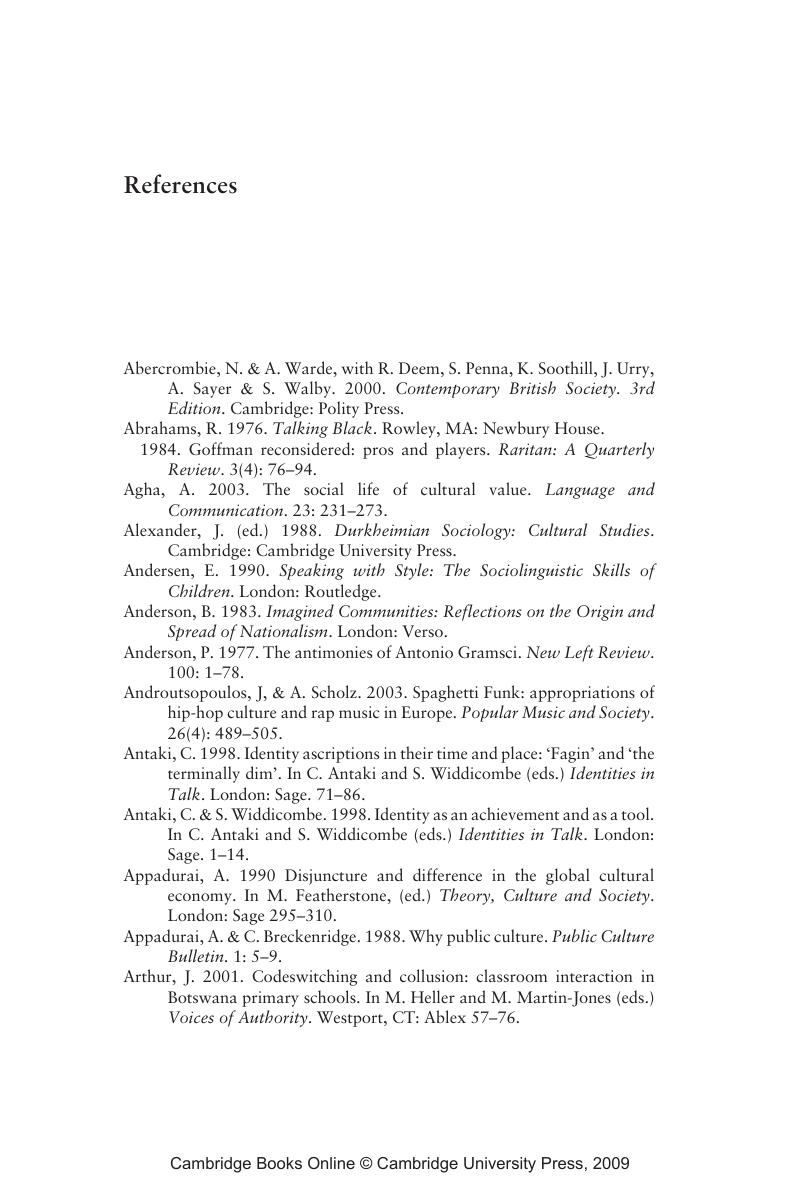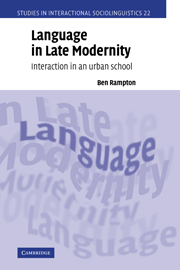Book contents
- Frontmatter
- Contents
- List of tables
- List of figures
- Acknowledgements
- Transcription conventions
- Part I Introduction
- Part II Urban classroom discourse
- Part III Performances of Deutsch
- Part IV The stylisation of social class
- Part V Methodological reflections
- References
- Index of names
- Subject index
- References
References
Published online by Cambridge University Press: 22 September 2009
- Frontmatter
- Contents
- List of tables
- List of figures
- Acknowledgements
- Transcription conventions
- Part I Introduction
- Part II Urban classroom discourse
- Part III Performances of Deutsch
- Part IV The stylisation of social class
- Part V Methodological reflections
- References
- Index of names
- Subject index
- References
Summary

- Type
- Chapter
- Information
- Language in Late ModernityInteraction in an Urban School, pp. 410 - 434Publisher: Cambridge University PressPrint publication year: 2006



